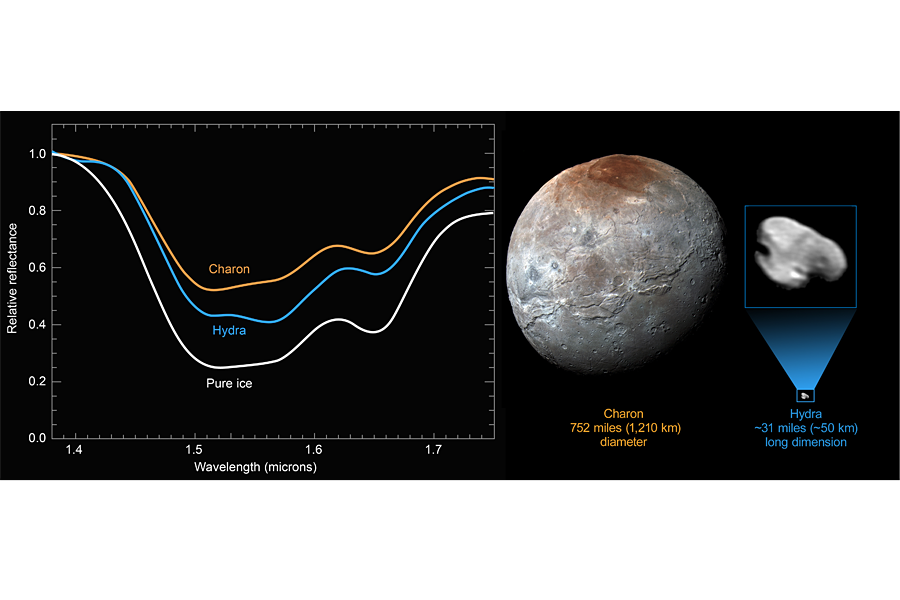'Pristine' water-ice spotted on Pluto's outermost moon
Loading...
The Pluto-Charon system is turning out to be remarkably icy.
The surfaces of the dwarf planet and its largest moon companion are both made up of ices.
And now scientists have confirmed that Pluto's outermost known moon, Hydra, is largely covered in nearly pure water ice.
Images beamed back to Earth from NASA's New Horizons spacecraft from its July 2015 flyby of Pluto showed Hydra's surface as highly reflective, which hinted that the tiny moon was quite icy. Now new data confirms that suspicion.
Infrared spectral data from the Ralph/Linear Etalon Imaging Spectral Array (LEISA) instrument on New Horizons was recently relayed to scientists on Earth. That data bears the "unmistakable signature of crystalline water ice," according to a NASA statement.
That signature also suggests that the ice on Hydra is remarkably pristine, perhaps even more so than the icy surface of Charon. Hydra appears more reflective.
This might be an indication that Hydra's surface has been contaminated less by darker material, while such material has accumulated on Charon over time.
"Perhaps micrometeorite impacts continually refresh the surface of Hydra by blasting off contaminants," Simon Porter, a New Horizons science team member from Southwest Research Institute in Boulder, Colo., said in the NASA press release. "This process would have been ineffective on the much larger Charon, whose much stronger gravity retains any debris created by these impacts."
Hydra is thought to have formed from the debris of the collision that formed Pluto and Charon. That impact wold have stripped water-rich material from the two bodies that collided, leaving icy debris to coalesce into stellar bodies.
Charon, considered Pluto's largest moon, actually forms a sort of pair with the dwarf planet. "They’re a fascinating pair: Two icy worlds, spinning around their common center of gravity like a pair of figure skaters clasping hands," a NASA statement described them in July, before New Horizons reached the system.
Unlike a traditional satellite, Charon actually shares a dance with Pluto. The pair orbits a center of mass that falls between the two.
But there are other moons in this system. In addition to Hydra and Charon, three other satellites have been spotted: Nix, Kerberos, and Styx.
The New Horizons mission has brought many elements of the Pluto system into sharper focus, including these moons.
While Hydra may seem small at an estimated 31 miles in diameter, Nix is just 26 miles at the longest, Kerberos comes in at about five miles across at the largest lobe, and Styx is about 4.5 miles at its longest point.
These other moons are also quite reflective, suggesting they too may have an icy coating.






